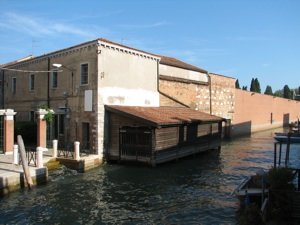Art of the Matter
Gary Radke sheds new light on convent patronage and the arts

The role of women in the church is a subject of controversy these days, and new research by Gary Radke ’73, Dean’s Professor of the Humanities, suggests the issue has a more complex history than most people think. Take the curious case of the Dominican convent of Corpus Domini, whose nuns sued their patron during the 1440s for rebuilding parts of their church, although he helped them realize their dream of having an infirmary.
“After being sued, the patron was forced to tear down a new choir loft because Venetian authorities declared that the nuns had a right to determine where they could worship,” explains Radke, whose breakthrough work on recent Michelangelo and Leonardo da Vinci exhibitions has won him widespread acclaim.
The case of Corpus Domini is one in a series of findings by Radke to shed new light on the power of 15th-century nuns to finance, shape, and use works of art and architecture. Drawing on evidence from the nuns’ chronicles and account books, he concludes that they viewed such projects proprietarily.
“Many nuns at leading convents were daughters of noble merchant families of Venice, so they had a lot of money and power,” Radke says.
Radke became interested in convent patronage some 15 years ago while co-authoring the first edition of Art in Renaissance Italy with John Paoletti. Since then, Radke has published several related articles, including one about the Benedictine convent of San Zaccaria, where nuns personally financed projects to ensure complete artistic and administrative control. Radke brought the subject to New York University last October, where he presented the Walter W.S. Cook Lecture, “To Please the Ladies,” which featured surviving examples of altarpieces and choir stalls from San Zaccaria.
“Artists were important, but until the church reforms of the 16th century, nuns called most of the shots,” Radke says.
Radke’s most significant new contribution is probably his study of the 15th-century renovation of the convent of Santa Croce alla Giudecca, which led him to comb rare and unpublished documents, giving him new insight into the daily lives of nuns.
“The process has yielded what I believe to be the earliest surviving architectural plans of the entire Venetian Renaissance and has provided a glimpse of how nuns planned kitchens, choir stalls, and even their toilettes,” he says. The site is now home to a low-security prison.
Media Contact
Rob Enslin
